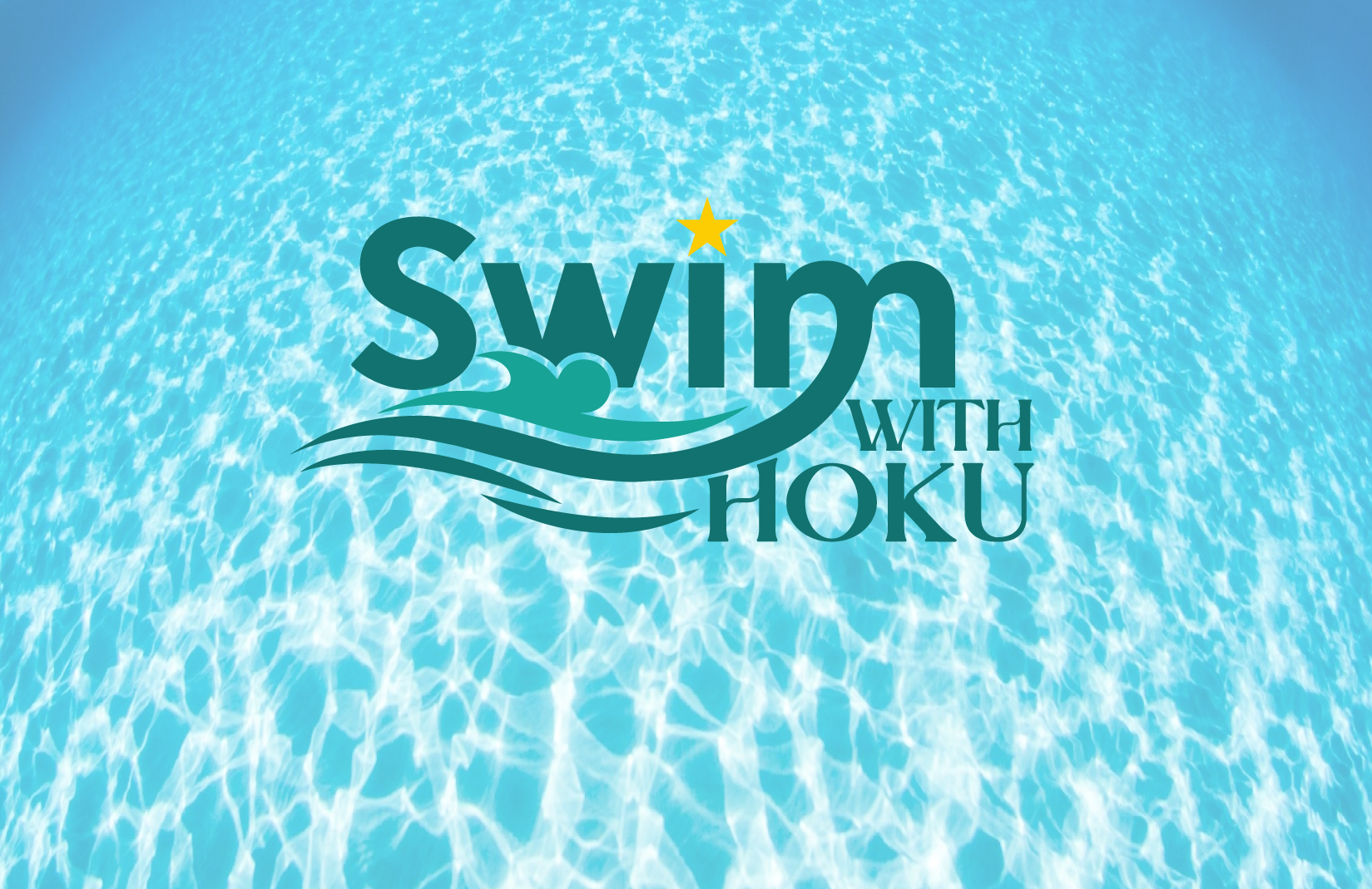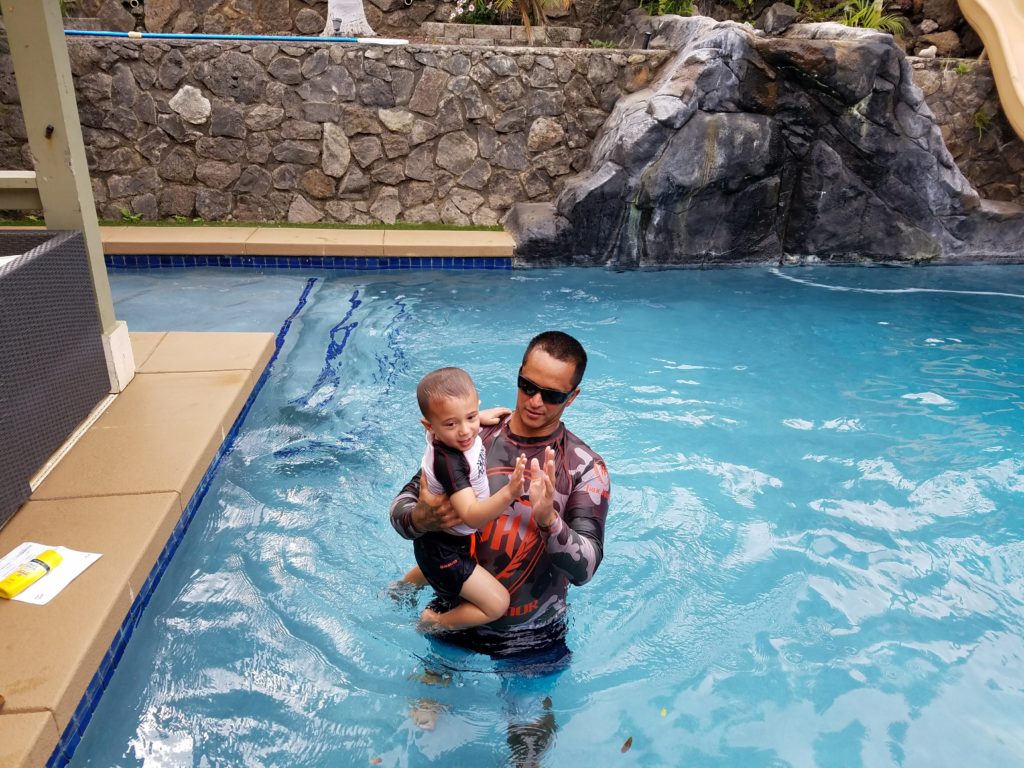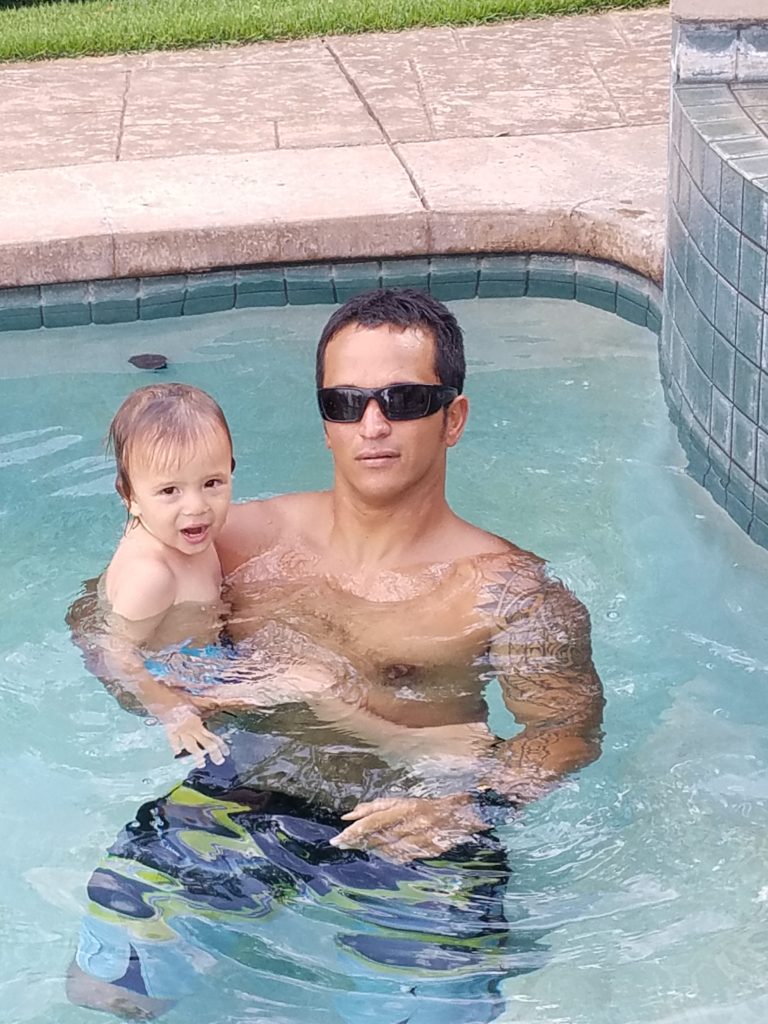
Swim Class Information | Swim with Hoku
Student ages
Swim with Hoku accepts students age 32 months and older in its swimming classes (younger children will be considered on a case by case basis).
Swimming lesson locations
Swimming lessons are hosted at various locations across Maui, Hawaii (upcoming class dates are listed in the registration form).
Swim class pricing
$450 (due in full on day 3 of class)
Your child is guaranteed to swim or your money back (guarantee applies to students 32 months or older).
Register for swim lessons!


How to get ready for your swim class!
After you’ve registered, here’s a list of tips to help you be ready for your first swim class:
- Please use the restroom before coming to class to be respectful of the pool host’s home.
- Tuition is due on the third day of lessons. Make checks payable to Swim with Hoku LLC and add the student’s name on the memo line.
- Do not take the student to any other water venues during the two weeks of classes.
- Do not eat food starting two hours prior to the class. This may change after 2-3 lessons.
- Students should arrive in their swim suit five minutes ahead of the start time.*
- Use a swim diaper if the student is not yet potty trained.
- Bring two towels and dry clothes for after the lesson.
- Class is held regardless of weather (except in the case of a lightening storm).
- Do not bring floatation devices or goggles.
*If you are late to your session, please be advised that we will not always be able to accommodate this. Your session may be cut short to keep the rest of our sessions on time. It is imperative that you are on time!
At home drills for after the classes
After Class Drills
After the class is over and your athlete is a swimmer use the following drills to naturally bring out the swimming skills.
1.) Two minutes of warm up drills to the side or between 2 adults.
One hand under the armpit, one on the tush for the push.
2.) Two minutes of drop drills. Depending on age and skill this can be reduced and phased out and this portion of time used for the third drill below.
Standing on the deck of the pool, hold the athlete facing you by the arm pits.
Put the child’s feet and knees into the water about 18-24 inches from the side.
Instruct the child to swim to side.
Count 1-2-3 and release the child.
Do this again.
Change your hold position so the child is no longer facing you. You should be looking at their back. Hold the child under both armpits from behind. Turn the child 90 degrees from the edge of the pool and drop the child in with only the feet touching the water. Count 1-2-3 and release them.
Turn the child another 90 degrees and repeat around the clock.
Sit the child on the edge of the pool – feet in the water. Tell them to swim back to the safe side and then push them in. When they grab the side teach them how to climb out or crab walk to the steps and get out.
In conjunction with the drop drills:
Make sure the new swimmer can drop off the step and then turn around and swim back to the step. To do this have the child stand on a step in the water facing the steps. Lift the child up and drop the new swimmer off the edge of the step into water over their head. They should look down and kick back to the step. Then have them stand on a step face out towards the pool and you lift them up and drop them off the edge of the step into water over their head, they should turn around and swim back to the step. Drop them pretty much straight up and down.
3.) Three to five minutes of stroke development.
Put the child on a step.
Walk back a distance they can swim.
Tell them to swim to you.
You should be down in the water with only your chin above the water as the child pushes off the step.
Make sure the child pushes off quietly, no splashing.
Your hands are stretched out and down 18-24 inches in the water.
As the child swims to you, bring your hand into your body so the child swims all the way to you, when the child can almost touch you, reach out and pick the child up under the arm pits.
Increase the distance 18-24 inches after each successful swim.
Depending on age introduce the strokes by demonstrating what you want and then ask the child to copy you.
Keep the swims short when developing new swim skills.
Keep it to 10 minutes.
No floatation devices at all.
A child will naturally progress with their swim skills using these drills.
Teaching Strokes in new Swimmers.
PRACTICE teaching another competent swimming ADULT before training your child.
TEACH BREAST STROKE first, then at age 6 teach freestyle.
Parents teach your child or bring them back to Hoku, avoid traditional swim classes.
No floatation devices at all.
The primary resource is your own swim skill and your own strokes: breaking those down step by step. Refer to YouTube Olympic swim videos to confirm technique.
YOU Show them and then TELL them to COPY YOU. Avoid trying to physically place their body in the position you are demonstrating.
They will be able to position themselves as they grow cognitively and physically.
MAXIMUM swim time is only a mental count to 10, roughly 10-15 seconds.
Most humans have 30-45 seconds of air before they are in health danger. If you feel they are in trouble before 10 count, DO help the student immediately.
It is always possible they did not get a solid breath prior to the nose and mouth being submerged (which is why you COUNT “one”- “two” – “three”).
It is very, very, very rare that upon placing the nose and mouth into the water they inhale into the airway water, but is clearly evident if that happens as they
will show immediate distress of flailing and thrashing and immediately going to a vertical position in attempt to clear the inhaled water and restore normal
breathing and oxygen circulation. They will cough very hard and repeatedly until they expel any liquid from the airway. Imagine the last time you sipped water
and just a small amount went down the windpipe, no one around did not watch the scene you created to clear liquid from your windpipe. It is a very noticeable event.
Help by getting their head out of the water immediately and let the natural process clear the issue. If you have any concern or the coughing fails to subside
or they become lethargic seek emergency assistance immediately. I am not a physician but normally when I get water down the windpipe I return to normal
breathing after less than one minute of hacking coughs, seek professional guidance from a doctor if desired.
How to teach them to push from the step.
Draw a line on the concrete or put a rope on the grass and put the student’s toes over the edge of the line. You do the same and then you bend at the knees
and hop 12 inches on the grass or concrete. Then ask the student to copy you. Then bend the knees again and repeat adding a little more distance. Keep doing
it on dry land until the student is good a hopping forward, not jumping up. This skill then transfers much easier in the pool than trying to attain it in the pool.
Start with short small hops.
Pushing from the pool step quietly and gently is done by having the child stand on the step, hands can be in any position.
Teach the student to squat down by bending the knees so the neck and head are out of the water.
Then teach them to keep their toes over the edge of the step they are on.
Then teach them to place their face and ears into the water and hold that for ½ of a second and then teach them to push firmly off the step.
Make them push firmly, quietly and without splashing every time they swim out to you.
The prerequisite of pulling the first stroke is the skill of swimming 10 feet with arms in the superman position and the head looking downward toward the bottom of the pool and at your feet.
To gain this superman arms out skill with any aged student put the student standing on the step.
Show them hands over your ears and tell them to cover their ear and do not let any water in their ears.
YOU KEEP YOUR HANDS over your ears until the student pushes off the step and then quickly get your arms extended under the water as in the following manner.
From the student standing on the steps with hands on ears, ask the student to gently push from the step and kick out to you a short 3-5 feet.
YOU MUST BE Submerged in the water with only your neck and head out of the water and your ARMS extended like superman – fingers straight and 18-24 inches under the water so the student will be able to see when you initiate (que) them to start the stroke later in the development.
After they can push gently from the step holding their hands on their ears for 5 feet, keep backing up 18 inches until 10-12 feet.
They need to push off gently with hands on the ears a series of 3-5 swims without breaking form.
Repeat the above with the student placing hands on top of head and then with arms stretched like superman, the bicep muscle should cover the ear, the fingers should be straight. (a slight cupping of the hand and fingers is taught later, after they are skilled in the stroke)
MAXIMUM swim time is a mental count to 10.
Teaching the breast stroke arm positon. Before they can pull the arm motion on the breast stroke, they must be able to hold a superman position while kicking for 10 feet and repeat that 3 or 4 times.
Then stand them on the step with their arms in the superman position, put imaginary glue on the palm of each hand and the same on each thigh.
Step back 3-5 feet and submerge your arms outstretched like superman and 18 – 24 inches under the surface, your neck should be at water level, palm of your hands face down and hands side by side.
Tell them to backward patty cake their hands and then do a big circle all the way down to glue the hand to the thigh. You do the motion under the water, starting by showing the backward patty cake of your hands so the back of your hands are “glued” to each other and hold for ½ second, then stroke and glue your hands to your thighs.
Then step back 8 – 10 feet and tell them to do the stroke when they see you do it – say “copy me” “do what I do with my hands”.
Then call them out to swim “one, two, three – swim to dad/mom” speak firmly and calmly, NOT excitedly or like a cheerleader. As they push off and start a kick and are 3 or 4 feet into the swim and you are sure they can see your hands under the water, pull the stroke slowly making the biggest arch’s your arms can swing and connect to your thighs. The student will learn to do the motion and hands stay glued on the student’s thighs until they finish the kicks to get to you. You then pick them up. If they pull the stroke in 6 feet, walk up and pick them up under the arm pits. If they have not done the stroke and have not kicked to you after your mental count to 10, walk up to them and pick them up under the arm pits and repeat. Walk the student back to the step and you return to your position in the pool. When they are proficient with that motion you teach them to unglue and bring the hands to the center of the chest at their heart and keep the hands together as if they were praying on their heart. They must make this position and hold for 1/2 of a second on each stroke until the really get that part down. From the hold/freeze on the heart, then show them to extend back to superman with arms covering the ears
again and looking downward towards your feet or the bottom of the pool. Their palms should be face down and hands side by side before starting the next stroke by doing a backward patty cake of the hands, and then do the pull again after a ½ second hold/freeze of the backward patty cake.
After they do one solid clean technically clean breast stroke motion of the hands and arms you add a second and a then a third on a single breath.
MAXIMUM swim time is only a mental count to 10, about 10-15 seconds.
Then you teach them exactly how you get a breath when doing the breast stroke, by lifting your chin and pulling the stroke from arms extended and backwards patty cake of palms of your hands.
This pulling of the arms in a wide circle arch motion plus the lifting of the chin by telling them to look up at the sky with their eyes will pull the head out of the water so they can get a breath.
To insure they get a breath you require them to say the word “hi” when the head comes out of the water.
This is a coordinated muscle control skill and takes some effort and time to get the timing correct. After they get one breath then work on longer swims to include two breaths on the every-other stroke pattern.
After gaining skill in breathing on stroke, you teach them the frog kick by having them hold the side of the pool, you grab each ankle and talk the student
through the bending of the knees into the stomach area and turning the ankles out and pushing the legs to extend them fully and return the legs to the straight positions with both legs extended fully. Then push the legs to bend them back to the stomach area and repeat until the student can do the motion by holding the side.
Then put them on the steps and have them do one arm stroke and one attempt to frog kick, after the attempt to frog kick, put your hands under each armpit and pick
only the head up out of the water and continue to walk backwards asking the student to do the frog kicks. Then repeat until they gain the frog kick skill.
Then have them do the arm stroke, frog kick with no attempt to breath. Work the breathing in after they gain the full stroke.
Do the freestyle stroke when they are 6 years old.
Copyright ©2023 Swim with Hoku. All rights reserved.
